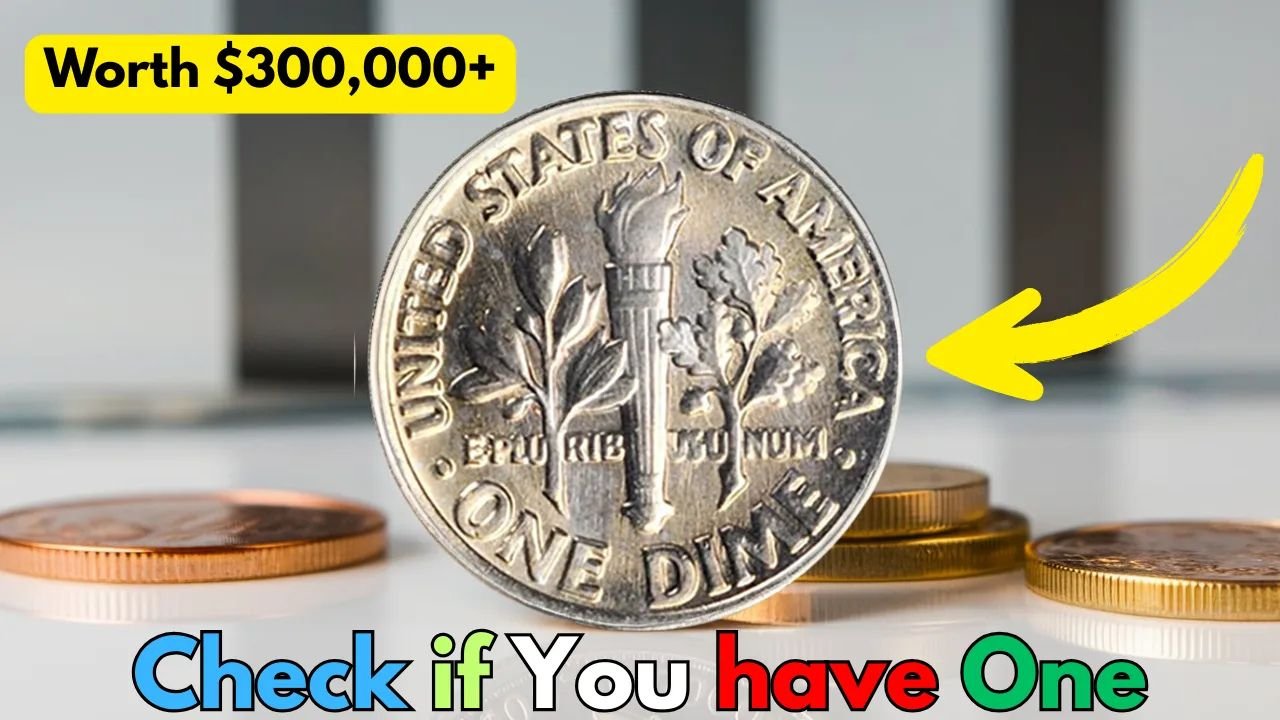For most Americans, the Roosevelt dime is a familiar face in pocket change, tucked into coin jars or scattered across store counters. Introduced in 1946 to honor President Franklin D. Roosevelt, this dime has long been a staple of U.S. coinage. But among the billions minted over the decades, a few rare examples have captured the attention of collectors — and one in particular, a No Mint Mark Roosevelt Dime, is now valued at over $300,000. Astonishingly, some of these coins could still be in circulation today.
The Roosevelt Dime: A Quick Overview
The Roosevelt dime replaced the Mercury dime in 1946, commemorating FDR’s legacy and his work with the March of Dimes foundation. Its design, crafted by John R. Sinnock, features Roosevelt’s profile on the obverse and a torch, olive branch, and oak branch on the reverse.
Although most dimes are relatively common, certain rare variations, especially minting errors, can be worth substantial sums.
The Rare No Mint Mark Roosevelt Dime
The “No Mint Mark” Roosevelt Dime is an extremely rare anomaly. Most dimes are stamped with a mint mark indicating where they were produced:
- D for Denver
- S for San Francisco
- No mark typically indicates the Philadelphia Mint
However, in some years, minting errors resulted in dimes missing their expected mint mark, creating an exceptionally rare collectible. One particular no mint mark dime, depending on the year and condition, can fetch over $300,000 in the collector market.
Key Features:
- Mint Mark: Missing (where it should be present)
- Estimated Value: $300,000+ for high-grade examples
- Rarity: Only a few confirmed specimens exist
Collectors prize these coins for their rarity and the intriguing story behind a simple minting oversight that became a multimillion-dollar legend in the making.
How to Spot a No Mint Mark Roosevelt Dime
Finding a valuable Roosevelt dime isn’t as simple as checking the date — you need to examine the mint mark carefully.
-
Check the Expected Mint Mark: Look for the letter “D” or “S” near the date. If it’s missing where it should be, you may have a rare coin.
-
Examine Condition: Coins in uncirculated or mint state condition are worth far more than worn examples.
-
Compare with Verified Examples: Use a magnifying glass to compare with authenticated no mint mark dimes to confirm authenticity.
-
Professional Authentication: Never rely solely on visual checks — certified grading from PCGS or NGC is essential.
Why This Dime Is Still Exciting
The allure of this rare Roosevelt dime lies not just in its value but in the possibility that it could still be found in circulation. Stories of ordinary people stumbling upon rare coins in change, old jars, or inherited collections are common in numismatic circles. For collectors and enthusiasts, the thrill of discovery is as valuable as the dime itself.
Even in the digital age, where coins often seem mundane, the potential of turning a simple Roosevelt dime into a $300,000+ treasure keeps coin hunting alive and exciting.
FAQ: Rare No Mint Mark Roosevelt Dime
Q1: What makes the No Mint Mark Roosevelt Dime so valuable?
A: It’s a rare minting error — a dime missing its expected mint mark, creating an anomaly that is extremely scarce among collectors.
Q2: How many of these dimes exist?
A: Only a few confirmed examples are known, making them highly prized in the numismatic community.
Q3: Can I find one in my pocket change?
A: While very unlikely, it’s not impossible. Rare coins have been discovered in old collections, coin jars, and circulation.
Q4: How can I tell if my dime is authentic?
A: Look carefully at the expected mint mark area with a magnifying glass and compare it to verified examples. Always have suspected rare coins authenticated by PCGS or NGC.
Q5: Where can I sell a rare Roosevelt dime?
A: Reputable coin dealers, major auctions, and certified online coin marketplaces like Heritage Auctions or Stack’s Bowers are ideal for selling rare coins.
Q6: Are there fake No Mint Mark dimes?
A: Yes. Some collectors attempt to alter mint marks to mimic rare errors. Professional authentication is essential to avoid counterfeits.






